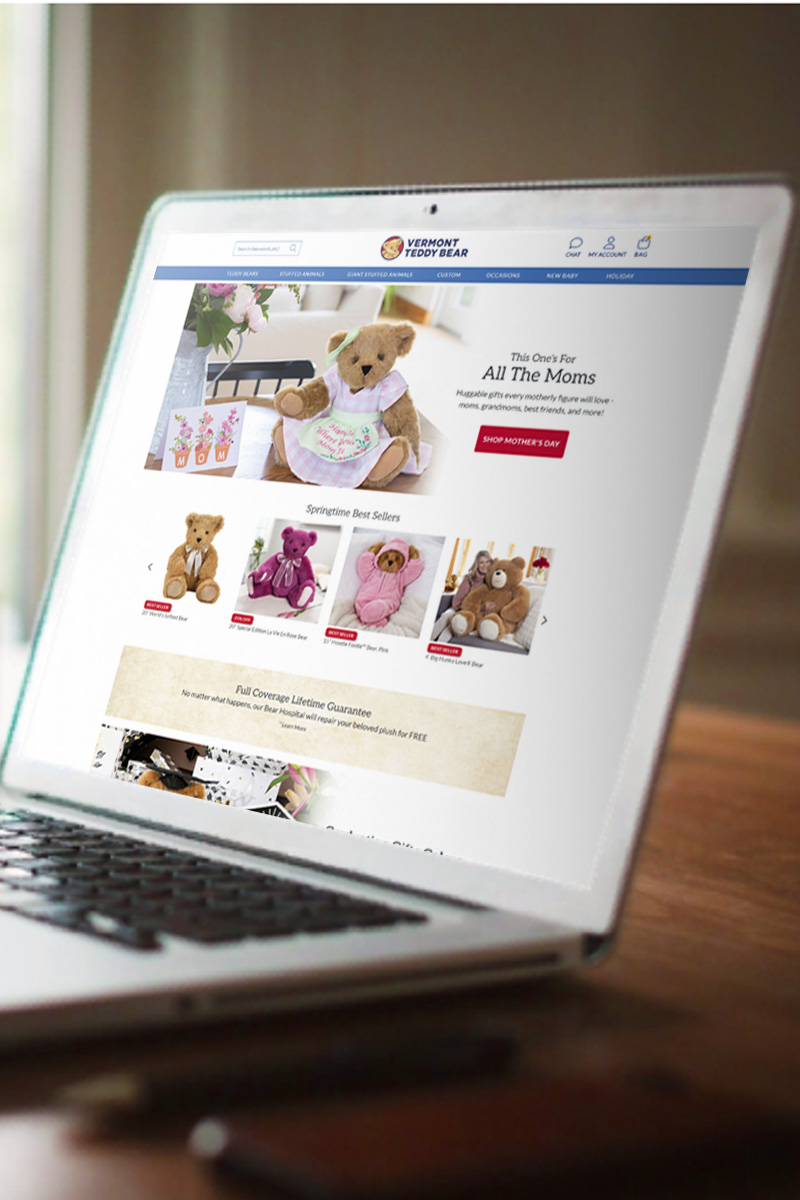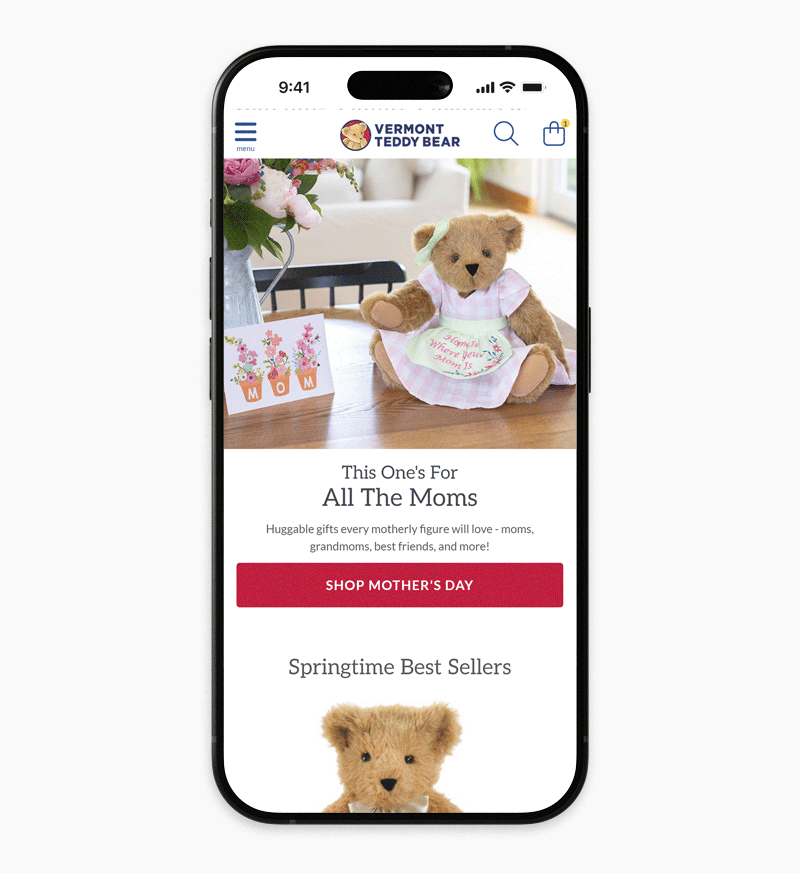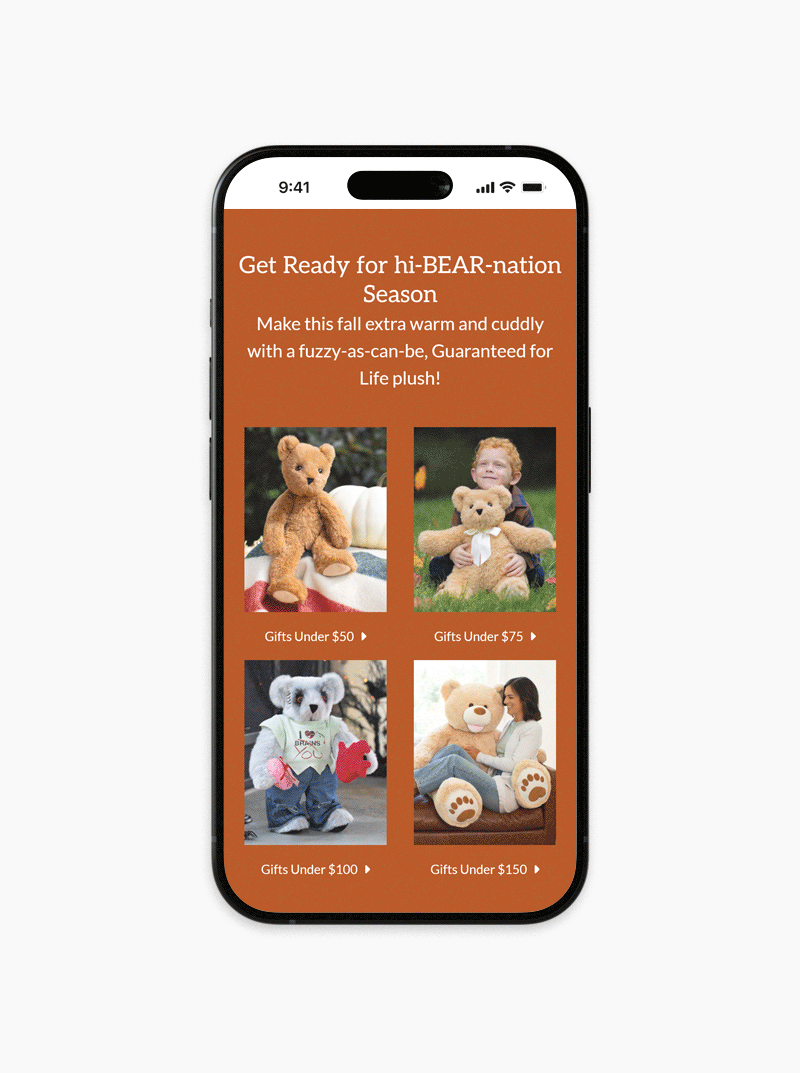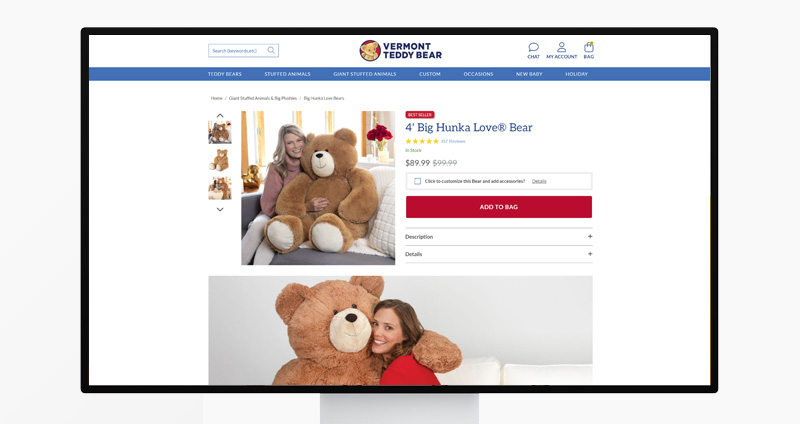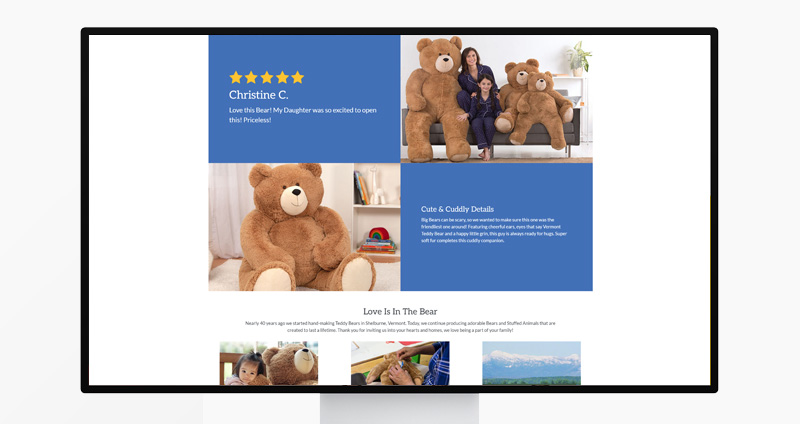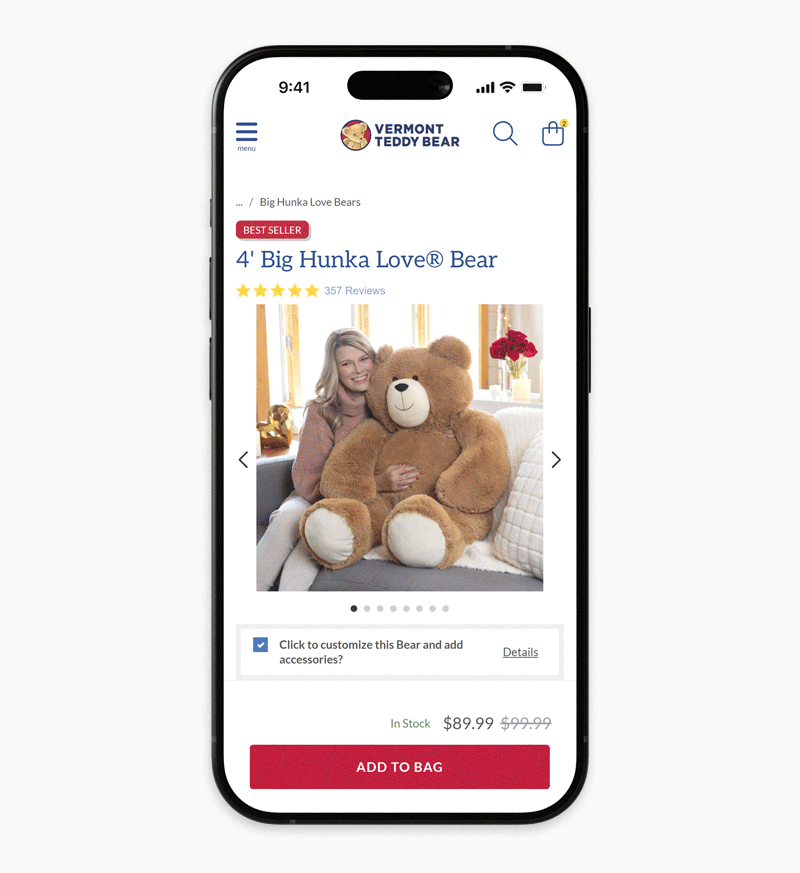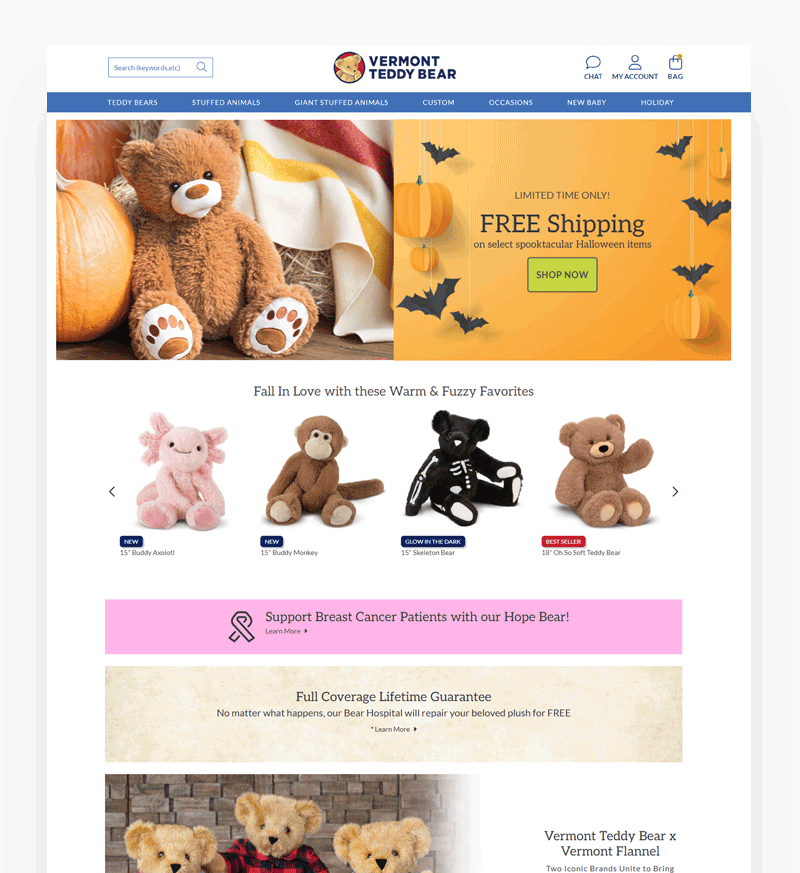Vermont Teddy Bear Redesign
2020 Migration to Commerce Cloud
When Comprehensive User Testing Leads to a Website Migration — and a Significant Boost in Conversion Rates
- Job Title
- Senior Web Designer
- Research
- Prototyping
- User journey mapping
- Competitive analysis
- A/B testing
- Design & Production
- Low fidelity wireframes
- High fidelity prototypes
- UI & UX Design
- Brand Styleguides
- Dev documentation
